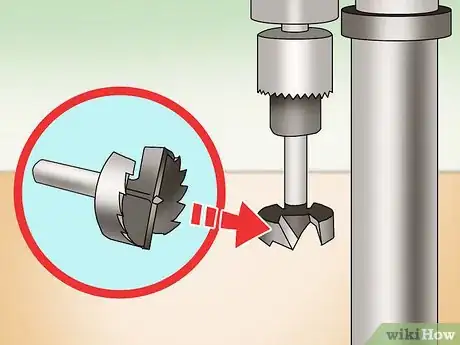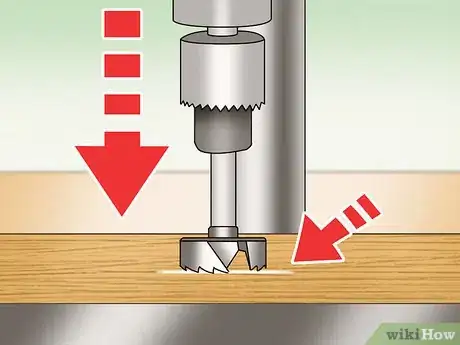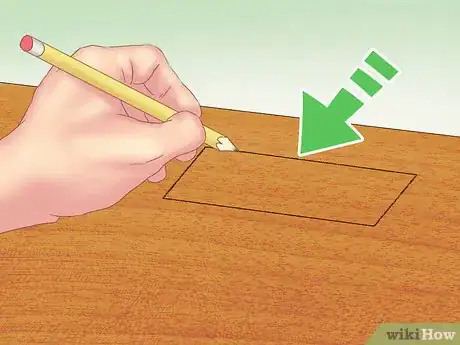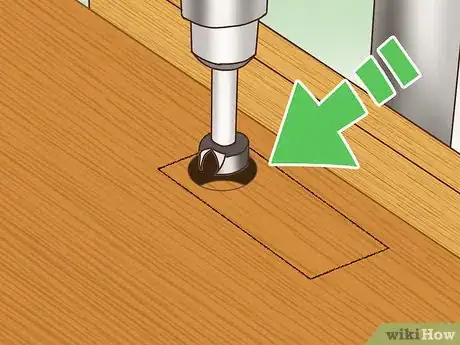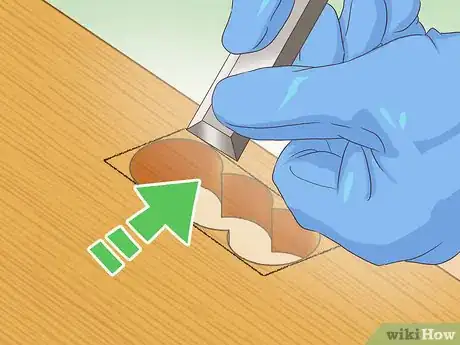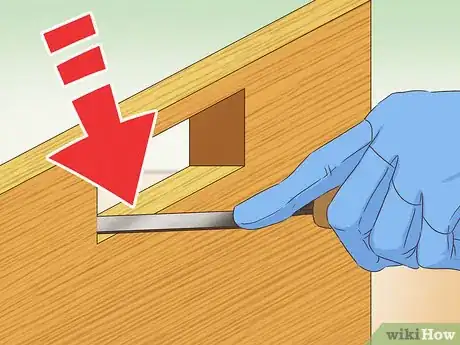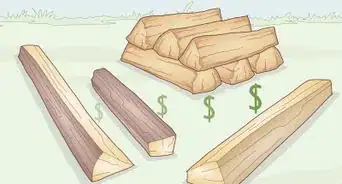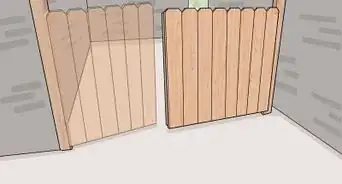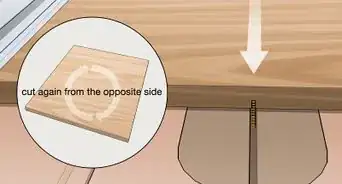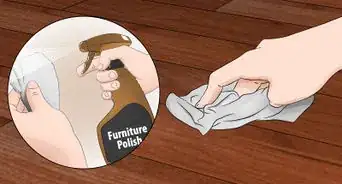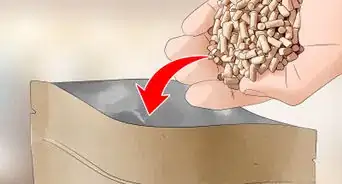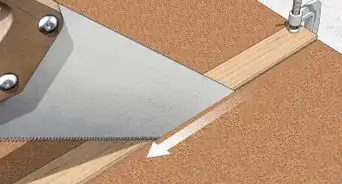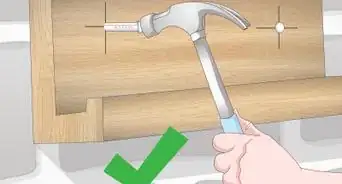This article was co-authored by wikiHow Staff. Our trained team of editors and researchers validate articles for accuracy and comprehensiveness. wikiHow's Content Management Team carefully monitors the work from our editorial staff to ensure that each article is backed by trusted research and meets our high quality standards.
This article has been viewed 48,486 times.
Learn more...
Cutting slots in wood is often known as mortising, and it can be done with a drill press. You'll need to set up a fence guard on your drill press table to make sure you move your board straight. Attach a Forstner bit to the drill and set up the proper plunge depth. To cut out the main portion of the slot, you'll drill a series of overlapping holes. You'll then clean the up the walls of the slot with a chisel, a file, and sandpaper.
Steps
Setting up the Drill
-
1Install a Forstner or Brad-point bit on your drill press. If your drill press currently has a bit in it that's not one of these, take the bit out. Choose a bit that's about ⅛ inch (3.2 mm) smaller than the width of the slot you want to make.[1]
- For example, if you want the finished slot to be about one inch (25 mm) wide, choose a ⅞ inch (22 mm) drill bit.
-
2Set the plunge depth for the drill. One way to do this is to make a mark on the end of the board at the depth you want the drill to go. Then, position the drill bit against the end of the board, and lower the plunge depth until it lines up with the line you drew.[2]
- The thickness of wood you're using and the depth of the slot you want determine the plunge depth.
- If your drill press does not allow you to set a specific plunge depth, you'll have to judge for yourself when you lower the drill each time.
Advertisement -
3Set up a fence guide for the wood you're cutting. Leave the drill off and set the board under it so the drill hits the board where you need it to. Make a fence guide by clamping a board to the table. A fence guide is a fixed straight edge that ensures you drill a straight slot on the board.[3]
- If you already have a fence guide attached to the drill press table, set that to the proper position.
- When you drill the holes, you'll slide the board along the table. For this reason, it's important to set up a fence that keeps the board moving in a straight line.
Drilling the Initial Slot
-
1Mark endpoints for the slot on the board. Before you start drilling, measure out the length of the slot on the board. Mark both ends of the slot with a pencil. Then punch a hole in the board with with an awl or a hammer and nail. This will help you make sure to hit the right spots.[4]
-
2Drill the endpoints first. Set the board on the table so that the drill bit is lined up over one of the endpoints. Turn the drill press on, and lower it into the board at the endpoint. After you drill one, lift the press. Carefully move the board so the other endpoint is lined up. Drill that hole, as well.[5]
- If you set the plunge depth, lower the press until it stops. If you didn't set a plunge depth, lower the drill press as deep as you want the slot to be.
-
3Drill overlapping holes along the length of the slot. Position the board so the bit is toward the inside edge of one of the endpoints. Lower the drill to make a hole. Move the board into position to drill another overlapping hole. Repeat this until you've drilled enough holes to cut out a rough slot from endpoint to endpoint.[6]
- You don't need to overlap the holes so much that you're only drilling half of a new hole. Just make sure that each hole overlaps enough so a continual line is drilled.
Smoothing out the Slot
-
1Use a sharp chisel to shave off the nubs between drill holes. When you drill, you'll leave ridges between holes. Make sure your chisel is sharp before you start this step. Push the chisel against the wood at the top of a ridge between two holes. Shave off the excess along the slot so the edges are almost flat.[7]
- When you start this part of the process, you can pull the slotted board off of the drill press and work with it on another table.
-
2Use a flat file to smooth the bumps. A chisel removes the large ridges left by the holes, but the walls of the slot won't be smooth yet. Slide a file up and down against each side of the slot until the walls appear to be almost completely smooth.[8]
-
3Smooth the slot completely with sandpaper. To get a slot with perfectly smooth walls, sandpaper is the best way to buff out the remaining roughness. Wrap a piece of sandpaper around a drill bit. Put the bit into the slot and move it up and down along the walls of the slot until you're satisfied with the smoothness.[9]
Things You'll Need
- Wood to slot
- Board for fence guide
- Clamp
- Drill bit
- Drill Press
- Measuring tape
- Pencil
- Awl/hammer and nail (optional)
- Chisel
- Flat file
- Sandpaper
References
- ↑ http://stonehavenlife.com/how-to-cut-slots-in-wood/
- ↑ https://blog.acmetools.com/3-ways-cut-mortises-faster-better/
- ↑ http://www.woodworkersjournal.com/make-mortise-drill-press-chisel/
- ↑ http://www.woodmagazine.com/woodworking-tips/techniques/routing/routing-perfect-slots?mode=step_by_step
- ↑ http://www.woodworkersjournal.com/make-mortise-drill-press-chisel/
- ↑ http://stonehavenlife.com/how-to-cut-slots-in-wood/
- ↑ https://blog.acmetools.com/3-ways-cut-mortises-faster-better/
- ↑ http://stonehavenlife.com/how-to-cut-slots-in-wood/
- ↑ http://stonehavenlife.com/how-to-cut-slots-in-wood/
